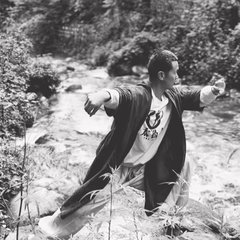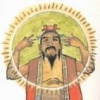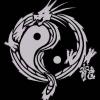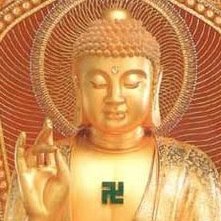Search the Community
Showing results for tags 'mopai', 'dalai lama', 'buddhism' or 'vajrayana'.
Found 99 results
-
Check it Quoted from here http://xuanfa.net/articles/true-stories-about-the-making-of-daba-buqiong-and-kazhuo-ande-pills-and-about-the-iron-clad-determination-of-a-great-yogi/ "Mozhi Rinpoche had a contest of realization power in tummo concentration with all my fellow brothers who practice tummo concentration. With the exceptions of Kaichu Rinpoche and a rinpoche from the Office of H. H. Dorje Chang Buddha III who has the realization of vajra power at the level of causing great movement of a vajra pill in public, the rest of us, including dharna kings and venerable ones, were no match for him. So, in the end, it was decided to let him be the chief master to produce the heat of tummo. Other rinpoches would be his dharma-protecting assistants. He stated that the purpose of his coming here was not to compare his realization power with others and was not for making Kazhuo Ande pills. It was a coincidence that he met this cause. He regards it as his duty to do something for living beings. His wish was to use the rare merit from this practice to persuade H. H. Dorje Chang Buddha III to conduct an initiation on him for the dharma of Vajra Body Substitution Meditation. However, H. H. Dorje Chang Buddha III told him, “I am not able to conduct initiation of state practice. I have illnesses all over my body. I don’t have good health. I would like to ask you to give me a treatment with the heat of tummo. I recommend you learn from the master of Kaichu Rinpoche, who is named King Rinpoche. Without using his belly, his fourth-step tummo power can use just one finger to get you burnt and leave a scar on you.” Thus, Mozhi Rinpoche respectively visited King Rinpoche and stated his request. Upon listening to what he said, King Rinpoche immediately prostrated toward the visage of H. H. Dorje Chang Buddha III and said, “Good heavens! My Buddha Master over-praised me. What kind of being am I? You, as a yogi, do not adhere to continuing your journey of searching for treasure in the vast ocean and now come to a lake to look for a pearl instead. Your boat is going the wrong way. Go quickly to beseech the Buddha! With the small ability you have, how can you contest with others? You should go quickly to repent yourself and beseech the dharma.” Mozhi Rinpoche said, “Isn’t the Buddha Master ill?” King Rinpoche laughed heartily and said, “The illness of Holy Venerable Vimalakirti was more serious! I will pray for your receiving the dharma of Vajra Body Substitution Meditation early.” Mozhi Rinpoche regrettably mentioned that the Buddha Master did not teach him the dharma of Vajra Body Substitution Meditation and he did not know what to do. However, he said, “I have made my iron-clad determination, just like having swallowed a sliding weight of a steelyard. I will not leave until I learn the dharma Vajra Body Substitution Meditation. I will just stay here shamelessly until I learn the dharma. I came here to learn the dharma for the benefit of living beings.” At the dharma assembly, Mozhi Rinpoche lay on the dharma board and had his head covered up so people would not know who was practicing tummo concentration. This great holy virtuous one with true realization of power and abilities never wanted to boast or praise himself. Everyone attending the dharma assembly was greatly moved and felt ashamed by such holy and pure style of humble self-cultivation. When the great holy virtuous one was conducting the dharma, a porcelain pot for frying the medicine was laid on his belly. The high-temperature heat of tummo was strong and vicious and directly penetrated the thick porcelain pot. Rinpoches who used a finger to test the temperature were all scalded badly. They had to throw the medicine powder into the pot and get away quickly to protect their fingers from getting injured." More to come.........
-
EXPERIENCE OF SUNYATA THE DILIGENT PRACTITIONER OF DHARMA is always mindful of the transience of life, for we have no idea what is going to happen in the future or when we will die. By contemplating how or when death will come, we learn to appreciate the impermanence of life, and to develop a sense of renunciation. In this way, we become less involved in mundane attachments. It is like planning a move from one geographical location to another. A wise person cultivates an attitude that accepts the idea, then plans the change skillfully, doing important chores ahead of time, so that at his new house everything will be ready and waiting. Once he arrives, he will be less concerned about the home he has left and more able to concentrate on settling down. In the same way, realizing how short and temporary this life is allows us to devote more energy to practicing the Dharma. This is a more fruitful undertaking than being obsessed with material pleasures, for a time is going to come when none of these possessions can be claimed. Indeed, a time will come when we cannot take along even one strand of hair. Our friends may be willing to help us now, but in the future, not they, or any possessions or wealth will have a chance to help us. Our position as Dharma practitioners is very rare, for even famous and rich people may not have the opportunity that we have. Because our lives are limited, we should regard the Dharma and the spiritual master as very, very precious. The connection between the spiritual master and the disciple cannot be stressed enough. The Buddhas and bodhisattvas of the past related to the Dharma first as ordinary sentient beings, and only through proper guidance did they integrate the teachings and achieve enlightenment. From this point, they went on to indestructible omniscience and eternal bliss. Such a state of mind, and the ability to benefit others, comes only from a proper relationship with the master. It is essential to relate to the master in a sincere and genuine way, for he guides us to the proper understanding of the experiences that come with practice. This practice takes a long time to perfect, and we cannot expect fruition to come about in a day or two, or even a few years. The nature of the mind can be explained in three points: how we perceive, how we relate to these perceptions, and the nature of phenomena. Perceptions, projections, and phenomena are all inseparable elements of the mind. Without the mind we have nothing to perceive and no way to relate to what is happening. All shapes, even nightmarish forms, are there because of the mind. If there was no mind, there would be no form. Because a blind man cannot see, for him, there is no color. We perceive colors when our eye consciousness is working, and with this consciousness we distinguish and label the different colors. In terms of ultimate reality, there is no difference between color and mind, or between the labels we give a color and the mind. In the same way, sound is not an entity separate from the mind that hears it, and the ear consciousness reflects the inseparable quality of sound and mind. Likewise, the quality of each sense perception is embodied as a sense consciousness--sight, hearing, taste, smell, and touch. Although sense experiences and their labels are not separate in terms of ultimate reality, we fail to take this perspective, placing what we sense and that which is sensing into different categories. If we acknowledge that there are no perceptions without the mind, we can understand that phenomena, too, are dependent on mind. Perceived objects do not exist independently and do not have a permanent quality of their own, and labels are just reference points that we devise to support the existence of our thoughts or perceptions. Labels such as good/bad, happy/sad, long/short, and hot/cold are created by the mind, and do not in themselves hold any inherent truth. Because everything is a function of the mind, phenomena are not things in themselves, but are what the mind is and how the mind relates to them. Acknowledging that phenomena are mental projections, we can achieve greater renunciation for there really is no point in getting attached to a situation that is not what it seems to be. Going further, we can actually look into our own mind and examine it. This is a fluid situation. We have identified the quality of knowing, but we cannot locate or label that quality. We cannot give our consciousness a fixed shape or color, for the nature of mind itself is insubstantial. That which identifies, relates to, and labels other things does not itself possess a fixed identity. This step-by-step method--examining the perceiver in relation to the perceived--can help us to realize the unborn and insubstantial quality of all things. We are working toward unfolding the nature of everything, which is sunyata or emptiness. Sunyata is not a vacuum or a state of nothingness. Indeed, an enlightened yogi sees the same things we do. At the same time, he or she appreciates the insubstantial and changing quality of everything, and understands that projections and perceptions can cause no harm or trouble. We, on the other hand, regard our projections as something substantial, and we believe that they support and sustain us. We think they are real; indeed, for us this is total reality. We fixate on our perceived reality and become attached to it. That is how we become trapped in our own projections. To go beyond intellectual understanding to a spontaneous experience of sunyata is to experience the nature of the mind as dharmakaya. This state manifests as an all-pervading quality of space. When a practitioner merges his mind with the dharmakaya, he or she continues to experience everything as before, but also sees the transience of all things. He knows at that point that his mind is insubstantial and non-compounded. The state of mind in which we see phenomena, yet perceive it without grasping, is called "the mind of great bliss." Although we do not categorize or focus attention on any fixed thing, we see everything that dawns in the consciousness distinctly, without mistaking one for the other. Such is clarity, and if we see clearly, we can sustain a blissful state without effort. In our lineage this is called "giving birth to the experience of mahamudra." As this awareness dawns, the quality of mind itself manifests as unborn and uncompounded. We construct our own confusion if we hold on to a fixed reality and label phenomena as entities separate from ourselves. In doing this, we inevitably crave some things and reject others, and this is bewildering. Thus, the boundary between enlightened beings and sentient beings lies not in what is seen (because enlightened beings see things too), but in the way they are seen. From the perspective of enlightened mind, everything is Buddhanature, everything is sunyata, and everything is insubstantial. To realize this involves a letting go, the letting go that is enlightenment. Those of us caught up in confusion, imprison ourselves by holding onto a fixed system of dualities. For example, when adults see a rainbow in the sky, they know what it is and understand that it is insubstantial. When a child sees a rainbow for the first time, he wants to catch it and make it his own. This is like the difference between enlightened beings and ordinary sentient beings. Realized beings, when they see anything, understand it as a reflection of the mind, and they get neither bored with it nor excited about it. Ordinary beings, thinking that what they see is real and permanent, run off with their perceptions and compulsively try to possess this and reject that. This is how confusion piles up. One of the highest experiences is to understand that reality is not fixed. It is also like this with dreams. Enlightened beings have dreams much like ours. Within our framework of habitual patterns, some dreams frighten us, and others please us. For a yogi, however, the dream experience is different. He recognizes that a dream is occurring, and he knows that it is insubstantial. He can catch the dream and play with it, doing whatever he wants to do with it. Unlike us, he recognizes that a dream does not have a fixed quality, and he can experience its fluid openness and space without becoming frightened or excited. Day-to-day life is like a dream, for we react to waking experiences as we do to dreams, with the same patterns or habits. Everything seems complete and real; some experiences make us sad and some make us happy. An enlightened being, however, has let go of everything, and regards all phenomena as insubstantial. Therefore, no one is hurt, nothing triggers excitement, and there is no cause for fear. The bardo experience can be encountered in the same way. Usually, we cannot see clearly at the time of the bardo because we have built such heavy habitual patterns, and our projections seem so concrete. We play a game of duality, including conflicts between ourselves and others, so we fight the bardo experience, and everything frightens and bewilders us. Yet, for an enlightened being who realizes the sunyata nature of all things, even in the bardo, whatever appearances may come, there is space, openness, and movement. The experience of sunyata is the essence of enlightenment. It is also the basis for bodhicitta, the motivation to benefit all sentient beings. This is because realizing insubstantiality--the sunyata nature of all things--makes the difference between sanity and insanity. A sane person sympathizes with the suffering of an insane person. He or she thinks, "I wish something better could happen to him," and in this way her bodhicitta grows. Likewise, a realized person sees that those who have not recognized sunyata clutch and hold onto fixed ideas, and knowing that this will lead the other person to further suffering, he or she wants to do all they can to help. Because a person with the experience of sunyata knows what the sunyata experience means to them, they know how much it would mean to others. Just having had the experience of sunyata brings benefit to others because now spaciousness is always present. We are no longer limited to doing only this much or that much, and because there are no limitations, there is also great ability and willingness. When there is no substantial blockage to our true nature, the experience of sunyata is immaculate. Without at least a beginning experience of sunyata, true compassion is not even possible. We will only be able to care genuinely when things go wrong for our own loved ones. This becomes a sort of possessive compassion. It is limited and discriminatory, and it is not the compassion of the bodhisattvas. The bodhicitta generated by bodhisattvas is directed toward all beings equally. Only with such non-discriminating motivation can there be the ability to benefit others. Great ability, or skillful means, extends everywhere because we have transcended a fixed state of reality and overcome all barriers. Regardless of the situation and regardless of which people are involved, we will have the ability to help. Learning about compassion is important, but it is the actual doing of practice that enables us to realize the profundity of the teachings and to integrate them into daily life. We are not talking about practicing for a couple of months or a few years, but doing it constantly and continually until we have great experiences. This is important because the greater our experience of sunyata, the greater and more spontaneous will be our ability to benefit all beings. At the point where we experience sunyata, practice becomes easy. When the sky is cloudy, the sun is obscured, but as the clouds evaporate, the sun's rays appear and become more and more radiant. Likewise, the more we let go of ego, the greater is the space created in the environment. Some people believe that persons who have realized sunyata become detached and aloof. This is not at all true. Indeed, with the experience of sunyata we become even more affectionate, respectful, and helpful toward others. We feel closer to everyone because the wish for them to attain enlightenment is also growing. Thus the greater our experience of sunyata, the greater our concern for all beings. The transcendental qualities of the great yogis are beyond belief. Once in Tibet, a great yogi was doing an intensive ritual practice and a robber crept up behind him with a knife. As the yogi played his drums and ritual objects, the robber cut off his head, which dropped to the ground. Nonchalantly, the yogi picked up his head, put it back on, and continued the ritual. The robber stared speechless until the yogi had finished, and then said: "Oh, I wanted to kill you so much! I really wanted to get rid of you." The yogi replied, "Well, will my death make you happy? If it will, I'll die right here. My prayer for you is that there may come a time when I will cut the neck of your ego." With that, he fell dead. This is an example of a total letting go. Of course, we do not actually want to drop dead, but the point is that the yogi acted effortlessly and spontaneously, and created for the future a connection between himself and the robber. In a later life, this robber became his disciple, and through this connection and his own prayers, he was helped toward liberation. Most of us have had dreams of effortless action. As you dream of a fire, for example, you jump into it, then realize that it is only a dream, and you are not burned. Or perhaps a huge beast lunges at you, yet nothing happens. It is like that for enlightened ones: being attacked is like being in a dream. Similarly, you may dream of finding a precious object, and your first instinct is: "Oh, wow! I've got a precious jewel!" But on second thought, you realize that this is just your dream, so you just play with the jewel and then let it go. This is what seems to happen to diligent practitioners. It is important to learn how to recognize sunyata so that we can realize that every perception is relative to our mind, and that the nature of labels, of phenomena--in reality the nature of all things--is insubstantial. We never reach a point where we can say that the mind is going in this direction, is located here, or comes from there--or for that matter that it has any particular color or shape at all. Understanding this, we can let go of our confusion, letting go of our ego and conflicting emotions as well. We can transcend our bewilderment and reach Buddhahood. A Buddha works so that others, too, may recognize sunyata, and may themselves become Buddhas. The main point is that someone who understands sunyata acts with naturally arising compassion for the liberation of all those who are suffering. When we build a house, we start by clearing away dirt, not by placing the completed building on bare ground. Digging the foundation is a part of the building process. In the same way, purification of defilements is part of the process of enlightenment, and it is necessary for our ultimate realization of sunyata. In helping you recognize the true nature of your mind, the teacher does not place a new mind in you, but just helps you to recognize how things really are. This is the profound instruction of the Kagyu lineage. It is a path of unbroken teaching because it is the same path that the great masters have followed. The teachings are not presented to you in a neat package ostentatiously wrapped, and just hearing about the Dharma is not enough. Methods such as visualizing deities, reciting mantras, and so forth provide the skill to purify all accumulated neuroses, and they engender the virtues that cut through obscurations. Dharma practices are the tools that we need to break through to the experience of sunyata. This teaching was given by Khenpo Karthar Rinpoche at Karma Triyana Dharmachakra. It was translated by Chojor Radha and edited by Sally Clay. It originally appeared in Densal, Vol. 11, Number 2.
- 10 replies
-
- 6
-

-
- Mind Nature
- Vajrayana
-
(and 1 more)
Tagged with:
-
Loppon Malcolm clarified the role of intellectual learning in Sutra, Tantra, Dzogchen & Mahamudra on the DW forum: http://www.dharmawheel.net/viewtopic.php?f=100&p=208783#p208783 All Buddhists teachings have three prajñās: the prajñā of hearing, when one listens to the teachings and understands them intellectually; the prajñā of reflection, when one integrates what one has understood; and the prajñā of meditation, where the meaning one has gathered through hearing and reflection is brought to realization. To claim that we are not meant to intellectually understand the path does not correspond with my education and training. The Tantra of the Union of the Sun and Moon states: Prajñā is three-fold: the prajñā of hearing severs external reification; the prajñā of reflection severs internal reification; and the prajñā of meditation severs secret reification. Vimalamitra states: The characteristics of prajñā: The characteristic of the prajñā of hearing is a great quantity listening and understanding words without interpolation. The characteristic of reflection is investigating the words and meanings of the mind, and giving explanations. The characteristic of meditation is distancing oneself from afflictions through meditation. We should pay respect to intellectual learning, not dismiss it.... There are two kinds of prajñā, contaminated, and pure. The former exists in common practitioners, the latter in realized practitioners.
- 29 replies
-
- 1
-

-
Wanted to give everyone a head's up. I just discovered today that the book Changing Destiny: Liao Fan's 4 Lessons - with commentary by Venerable Master Chin Kung is available for Amazon's Kindle for only 99 cents. Unfortunately B&N doesn't offer it. Only ebook version I've found so far is the one for Kindle. You can however get a different translation (no commentary) as used copies at both B&N and Amazon as a paperback (I own it also). Four Essays on Karma by Yuen Liao Fan
-

Tsongkhapa's Lam Rim Chen Mo w/ audio and video commentaries
Simple_Jack posted a topic in Buddhist Discussion
I ended up doing a search on the internet to see if there were any video and/or audio commentaries on Lama Tsongkhapa's Lam Rim Chen Mo/The Great Treatise On The Stages of The Path To Enlightenment from any venerable teachers...Lo and behold, I found some resources which I think are good enough to share. For anyone interested you can read the text from a 3 part translation on amazon.com: http://www.amazon.com/Great-Treatise-Stages-Path-Enlightenment/dp/1559391529 A collection of mp3 files from a set of teachings on this text by H.E. Choden Rinpoche: http://www.lamrim.com/lamrim/ Audio commentary by Abbess Thubten Chodron: http://www.thubtenchodron.org/AudioLibrary/index.html A link to someone's youtube channel, that has a set of talks given by H.H the Dalai Lama, on the Lam Rim Chen Mo at Lehigh University in Bethlehem, PA (also included in this link is a partial listing of his other teachings on this text given elsewhere): http://www.youtube.com/playlist?list=PL63437123ADC315D0 Another youtube channel with a video series of talks on the Lam Rin Chen Mo: http://www.youtube.com/user/ChenrezigCtr?feature=watch This is from the official website of H.H. the Dalai Lama which has recordings of numerous teachings and appearances at events, press meetings, etc. I'm posting a link to a series of talks on Atisha's Lamp For The Path To Enlightenment and Tsongkhapa's Great, Middling, and Concise Treatises on the Stages of the Path to Enlightenment: http://dalailama.com/webcasts/post/267-18-great-stages-of-the-path-lam-rim-commentaries Other recommended video/audio commentaries from that website: Je Tsongkhapa's Praise for Dependent Origination - http://dalailama.com/webcasts/post/226-praise-for-dependent-origination--avalokiteshvera-permission-initiation Je Tsongkhapa's The Three Principal Aspects Of The Path - http://dalailama.com/webcasts/post/289-the-three-principal-aspects-of-the-path- 117 replies
-
- 2
-

-
- Buddhism
- Tsongkhapa
- (and 5 more)
-
When I was last posting here, many of you were asking me when my book would be available to purchase. I have been busy with that project and it is now available at Amazon and on Kindle. I made an effort to present many of the pith instructions that I have received from mainly Dzogchen masters, Mahamudra masters and Zen masters, so that anyone could experience the "shift" into Enlightened Mind easily and in a relatively short time. The material is presented in generic language without the need to know anything about Buddhism nor the Tibetan teachings. To learn more about the book please visit my website: www.wayoflight.net Please share your feedback or comments! Jackson
-
Can anyone recommend this system of 72 levels, can you please share any experience with the system -
- 302 replies
-
- sunn yee gong
- neikung
-
(and 2 more)
Tagged with:
-

WHO HAS SPOKEN TO SHIFU LIN ON THE PHONE OR SEEN HIM IN PERSON
Kasuku posted a topic in The Rabbit Hole
and NAZIRI doesn't count!! -
These may be going for a song on the US site too: Secret Teachings of Padmasambhava http://www.wisdom-books.com/ProductDetail.asp?CatNumber=25069 A translation of tantric practices from the great Indian master Padmasambhava, who is credited with establishing Buddhism in Tibet. These advanced Tibetan Buddhist teachings provide instructions for gathering and harnessing basic life energy, especially concerning transforming sexual energy and re-directing the essence of that energy toward spiritual realization - when used skilfully by committed practitioners with appropriate training. Also here are teachings on the fundamental elements that make up our world. The commentary by Dr.Lipman describes how to use these life energies for personal development. These two brief works of Padmasambhava, Fivefold Essential Instruction and a Section of Hidden Instruction: the Innermost Essence of the Dakini, not only present the tantric teachings on the channels (tsa), energy (lung), and potencies (tigle) in a clear and practical way, but they also offer a unique Dzogchen perspective on them. The Fivefold Essential Instruction shows how the five elemental phases of earth, wind, fire, water, and space operate at deeper and deeper levels of reality. The Section of Hidden Instruction, the Innermost Essence of the Dakini, is a more comprehensive treatment of the five phases from a Dzogchen view. Cascading Waterfall of Nectar http://www.wisdom-books.com/ProductDetail.asp?CatNumber=21825 A profound commentary on two important texts on the preliminary practices, or ngondro, informed by Thinley Norbu's understanding of the concerns of Western practitioners. The main commentary is on the well-known Dudjom Tersar Ngondro, a terma revealed by Dudjom Lingpa. Also included is a second commentary, on a short prayer text (Tsogskhang Dechen) written by Dudjom Rinpoche. Together, these two commentaries offer the occasion for Thinley Norbu Rinpoche to impart his powerful insight into various aspects of the Buddhist path from the tantric point of view.
-

Conducting Body, Speech and Mind During and After Meditation
C T posted a topic in Buddhist Discussion
Heart advice from Master Thinley Norbu. Thus it is said. In order to sustain the wisdom mind of the Great Perfection, if one wonders how body, speech and mind are directed to engage in this practice, it is as follows. For beginners, in order to purify the flow of karmic energies so that they enter the space of the central energy channel, the body must be straight. If the body is straight, the channels are straight. If the channels are straight, the vital energies can flow. If the vital energies can flow, awareness becomes clear. Whenever awareness becomes clear, the pure essential nature of mind becomes apparent, free from clearing away or keeping. In order for that to occur, in the seven-point vajra posture, the legs are crossed, the hands are in the gesture of evenness, the stomach is pulled back toward the spine, the chin is slightly lowered, the shoulders are open like a condor's wings, the tongue is touching the palate, and the eyes are looking out over the tip of the nose like a tiger, directly into space. Various methods increase and enhance samadhi, including the vajra recitation with the movement of breath by inhaling with the syllable OM, letting the breath remain with the syllable AH, and exhaling with the syllable HUNG. This practice is helpful to rely on in order to increase stability in samadhi. According to the wisdom mind of the extraordinary Great Perfection, however, should one be a great practitioner of sustaining self-nature as the sole essence of awareness, then all phenomena are synthesized as wisdom appearances, sound, and awareness. Only knowing that the self-nature of one's own mind is the Three Kayas and never waver from dharmadhatu, there is nothing other than the natural abiding of body, speech and mind, so it is absolutely unnecessary to apply effort to fixating on acceptance and rejection. The precious Vajra Master Guru Rinpoche said to his consort, Khandro Yeshe Tsogyal, in the Essence of Butter Pith Instructions: Devoted consort, listen to me. Even though there are many profound pith instructions for the body, just leave the body comfortably at ease. Everything is contained in that. Even though there are many pith instructions for controlling the vital energies, such as mantra recitations and others, be like a mute, free from speaking. Everything is contained in that. Even though there are many pith instructions for the mind such as holding, loosening, creating, gathering, drawing in, and others, in the ease of one's own uncontrived nature that settles naturally, everything is contained in that. From Omniscient Longchenpa, "With relaxed body and mind, in the mind's bed of tranquility, Like a person with a mind free from engagement who has nothing to do, Without being rigid or careless, Leave the body and mind comfortable. However one stays, stay in one's pure nature. However one abides, abide in one's pure nature. However one goes, go in one's pure nature. In the space of enlightenment, there is naturally no going or coming. Not going and not coming is the wisdom Body of all the Victorious Ones. Whatever one says, say in one's pure nature. Whatever one speaks, speak in one's pure nature. In enlightened mind, there is naturally no saying and speaking. Free from saying and speaking is the wisdom Speech of all the Victorious Ones of the three times. Whatever one thinks, think in one's pure nature. Whatever one considers, consider in one's pure nature. From the beginning, there is no thinker and no considerer. Free from thinking and considering is the wisdom Heart of all the Victorious Ones of the three times. From nonsubstantiality, everything that manifests is Nirmanakaya. Pure appearance of self-sustaining inconceivability is Sambhogakaya. The state of no original substance is stainless Dharmakaya. The Three Kaya's result is simultaneously accomplished in the inconceivable state." Thus as he says, this must be realized. As Saraha said, "Since sole mind is the seed of everything, whoever aspires to transcend samsara and enlightenment is granted the fruit of their wishes. I prostrate to mind, like a wish-fulfilling jewel." Just recognize again and again one's own unconditioned stainless wisdom mind. Buddhas are buddhas due to their faultless, one-pointed, unending recognition of this. By realizing and applying this, there is no Dharma to accept or throw away. All phenomena pervade in the sole oneness of dharmata. There is nothing to discriminate, like on an island full of gold. Once again, the great saint Saraha beseeched, "If there is recognition, everything is included there; no one has known anything other than that." As it is said in The Great Perfection Tantra Containing the Absolute Meaning: Since the mind experiences the three times, The lives of the past, present and future will occur. Since the mind changes and transfers, That is why the body is born and dies. Since illness, happiness, suffering, and so on Are one's mind, this ripens as samsara. May all beings experience the unending causes of equanimity, peace and joy. -
These may be of interest: Video of Chime Phakme Nyingtik Drupchen http://vimeo.com/34372057 Podcasts on a variety of topics http://www.khyentserecordings.org/namo/Podcasts.html
-

Discriminations Between Buddhist and Hindu Tantras
Tibetan_Ice posted a topic in Buddhist Discussion
Hi, I came across this web page the other day. It is a comparison of the types of siddhis or powers achieved by Buddhists and Hindus. Is there any truth to the idea that Buddhism is superior to Hinduism because the achievements are greater? Is Yogi C. M. Chen authentic? He seems to have advanced knowledge of many things.. He is claiming that Brahma was converted by Buddha... http://www.yogichen.org/cw/cw28/bk029.html Comments? TI -
Hi, I found this series of videos on Youtube yesterday. It is very insteresting. His Holiness the Gyalwang Drukpa gave teaching on a terma revealed by one of the previous lives of Kyabje Trulshik Rinpoche - "Yangti Guru Padmasambhava". He speaks of many miracles. In the second video, Gyalwang Drukpa declares that his father left his footprint in stone, and even painted pictures into stone with his finger. He says that many accomplished practitioners demonstrate their abilities in order to help their students overcome the solidity of their own beliefs. His interpretation of sambhogakaya is a little different from what I've read before: He says that the sambhogakaya is related to sound (not light). The other very interesting thing that he teaches is that in order to walk through solid pillars, one must first start by adopting the correct view with the use of imagination and practice that. He says that the reason why we normally can't walk through solid pillars is because we are too attached to the 'solidity' of the pillar. Day 1 Day 2 Day 3 Day 4 Day 5 TI
- 6 replies
-
- 3
-

-
- Dzogchen
- Padmasambhava
- (and 4 more)
-
Hi all! I have seen my name pop up quite often lately regarding Dzogchen teachings. I would enjoy the opportunity to correct many of the comments regarding my relationship to the Dzogchen teachings and to clarify several points that are incorrect regarding Dzogchen practice and realization. There seems to be a clique of "Hinayana style Dzogchennist Taliban" panditas here that confuse conceptualization for rigpa wisdom or yeshe. One can't intellectualize one's way to rigpa. In spite of what many from this clique consider my view to be, this recent text I wrote contains the view that has been recognized here: If perceptions are not "objectified" and the perceiving is not "subjectified", there is then only the "unestablished". When the "unestablished" arises one cannot frame it in any conceptual way or else it becomes the "established". The "established" is then something perceived and objectified. If something is perceived and objectified then for that to be possible the perceiving must have become subjectified. Knowing this we find Nirvana is the condition of the "unestablished". Further comment: In practice, this means we leave "appearances" as-is without creating a story that defines them in any conceptual way. Likewise we leave our "perceiving" undefined, not creating a story about a "me", the perceiver. Continuing in this completely open and undefined space of experience, how can each moment not be Nirviana? I think this formula shows the same point that Zen, Dzogchen, Mahamudra, Madhyamaka and the Buddha's earliest teachings point to... Jackson Peterson. My background: http://mumonkan.org/resources/jackson.aspx
- 450 replies
-
Hey guys! Lately, I've been struggling about what my belief falls under. I have made a post in my introduction to this site that stated this question, and I will quote it below: I've been looking things up and it is pretty confusing. I also associate myself with atheist pages on facebook and they do say I can be a Buddhist Atheist but not a Taoist Atheist because apparently Taoists look up/worship deities? Also while I'm at it, I do have a question regarding homosexuality. What is the general view of homosexuality to Taoists? I will struggling following a belief that condemns love. I know Buddhism is rather alright with it albeit there is no firm statement about it. Thanks in advance!
-
Muay Thai Documentary 8 Limbs: Life Of A Nak Muay- Born For The Fight- Muay Thai Boran The noble Art- http://www.youtube.com/watch?v=FCSy151WrIg Training- Heavy Bag power training- Head High kicking- Kicking trees-
-
My name is Aziz. I've been practicing qi gong more than 15 years. I started them with Mantak Chia's inner smile. Today I'm practicing 3 different Daoist Sect's Nei Gong practices. On lvl 1. I learned Xing Shen Zhuang Fa from David Verdesi on 2002. And in last 2 years I began to practice Da Mo Pai's Nei Gong step 1 and Mo Pai's Nei Gong Step 1. Pai as you know means "school". Also I'm practicin and teaching Yi Jin Jing. The formal method of Da Mo Pai which the school of Bodhidharma or DaMo. I mostly practiced traditional forms of qi gong. I met with an "immortal", "sage" on these years. Yes I saw with my eyes he got really exciting powers. After all these years spending on qi gong I started to realize a different path. I'm mostly practicing ZaZen meditations now. All the qi gongs are helping my meditations. I'm here to learn different stages of meditations and traditional paths. Practices that I learned and still using: Xing Shen Zhuang Fa Xİng Gong Ba Gua Yi Jin Jing Stillness Meditation Shen Zhen Gong Nei Gong - Part 1, Step 1. Fullfilling the lower dantien with yang qi. Regards Aziz
-

In the Name of Enlightenment - Sexual Abuse by Sogyal Rinpoche
DalTheJigsaw123 posted a topic in Buddhist Discussion
For more information about the ongoing sexual abuse by Sogyal Rinpoche see: http://behindthethangkas.wordpress.com http://www.guardian.co.uk/commentisfree/belief/2011/jul/01/lama-sex-abuse-sog... http://thedorjeshugdengroup.wordpress.com/2012/03/27/sogyal-rinpoche-and-the-... -
Found an interesting essay by Sam Harris and his take on Buddhism and Buddhist meditation. Killing the Buddha
- 16 replies
-
Boddhidharma & Shaolin 18 Lohan Hands Info on Boddhidharma (also known as Damo, Tamo, or Tatmo), the first Patriarch and founder of Zen Buddhism who traveled from India to China where he taught Yoga and the 18 Lohan Hands exercises, to the Shaolin Monks. These exercises became blended with many fighting arts over time. However, Bodhidharma did not agree with the Chinese Emperor's philosophy, because the Emperor thought he should build great temples in worship of Buddha and that was the best way to get to heaven and gain merits. But Boddhidharma knew it was only a person's heart that mattered and whether you are a good person. The Emperor and Boddhidharma did not agree, so Bodhidharma went to the Shaolin Temple and taught there. When he arrived he found the buddhist monks had poor concentration and their bodies were weak, so he taught them the 18 Lohan Hands routine. The 18 Lohan exercises http://www.shaolin.org/chikung/lohan.html Shaolin temple Videos Chinese sub-titled documentary about Shaolin Temple- Hai Teng and Shaolin- Shaolin Temple - Shi DeYang and Shi Suxi National Geographic, Myths & Logic of Shaolin Kung-Fu Music Video- Cool Shaolin Kungfu demonstration videos Videos with a monk named Shi Yan Ming Shaolin Kung Fu Shi Yan Ming in People and Arts Channel Si Fu Shi Yan Ming permormance in NBC Channel Shi Yan Ming Monje Shaolin visita Mexico Shaolin Childhttp://www.youtube.com/watch?v=1zgp48SidH8&NR this video has close ups of the indented floors, made from years of monks stomping down on them- Training- shaolin entrainement 1 Shaolin taizu changquan YouTube - Shaolin taizu changquan
-
An excellent documentary I found explaining the traditions of Tibetan Buddhism. Tibetan Buddhism is considered by many to be the most authentic form of Buddhism still in existence today. Included in this documentary is video footage of Yoga practices called Tummo and Trulkor- [media]http://www.youtube.com/watch?v=dOk0tZHwCs4[/media ]
- 10 replies
-
- 3
-

-
- Tibetan Buddhism
- Dalai Lama
-
(and 8 more)
Tagged with:
-
Here is a cool BBC Documentary entitled "The Life of the Buddha"- [media]http://www.youtube.com/watch?v=zFbjDcz_CbU[/media ]
- 1 reply
-
- BBC
- Documentary
-
(and 8 more)
Tagged with:






